Mad Love (1935)
Directed by: Karl Freund
Written by: Guy Endore, John L. Balderston, Maurice Renard
Starring: Colin Clive, Frances Drake, Peter Lorre, Ted Healey
USA
AVAILABLE ON DVD and DIGITAL
RUNNING TIME: 68 mins
REVIEWED BY: Dr Lenera
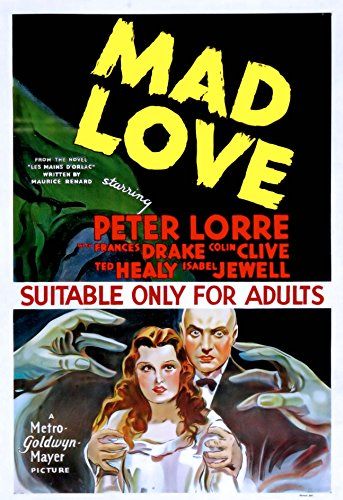
In Paris, the great surgeon Dr. Gogol falls madly in love with stage actress Yvonne Orlac, but she’s married to concert pianist Stephen Orlac. When Stephen’s hands are badly crushed in a train accident, Yvonne goes to Gogol and begs him to help. Gogol agrees to do so, but the hands he decides to surgically graft on to Stephen’s arms belong to Rollo, a recently executed murderer and circus performer who killed his father with a throwing knife. The operation is successful but Stephen is not able to play the piano very well and his hands seem to have a liking for knives….
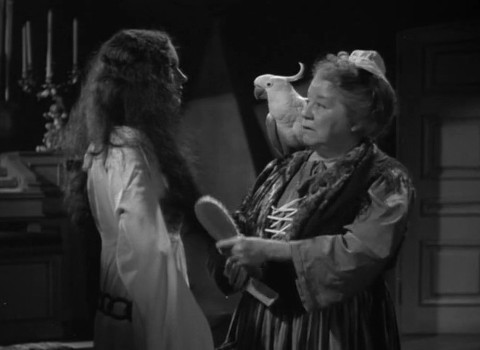
Mad Love is probably among the lesser known of the big studio horror films of the 1930’s and I didn’t think that I’d actually seen it before. However, as my DVD began to play, some of the images seemed vaguely familiar to me, so it was obvious that I had watched it before several decades ago but didn’t remember what the name of the film was, strange seeing that I’d certainly heard of Mad Love in the interim. Anyway, I soon realised that it was this movie which contained a scene which had haunted me for ages after that first viewing when I must have been very young, a scene which must have really unsettled audiences in 1935 and which certainly unsettled this seven or eight year old. But it’s really only one of many good things in this often quite remarkable horror film which I now consider to be almost up there with the other true genre classics of the period such as Frankenstein, Dr Jekyll And Mr Hyde and The Island Of Lost Souls even if it’s more obviously melodramatic. It’s positively reeking of gloomy Gothic atmosphere conjured up by director Karl Freund in what is the second of his great genre pieces [the first being The Mummy] as well as containing a healthy dollop of fetishism, is stunningly photographed by Gregg Toland and Chester Lyons, and tells a compelling story of unrequited love and increasing insanity where we pity the villain as much as we’re frightened of him, a villain played by Peter Lorre in what for me exceeds his turn in M, his unique screen persona and style of acting never put to better use. Oh, and the comic relief is actually funny and seems like an organic part of the piece. All this is just as well seeing as the sole major flaw of Frankenstein and Bride Of Frankenstein is present in this film, the hammy actor Colin Clive, though to be fair he does pull off a few scenes reasonably well. The film seems obviously truncated also, though part of the appeal of many of these films is just how short they are.
It was based on Maurice Renard’s novel 1920 The Hands Of Orlac which is one of the most major examples of body horror in fiction. It had previously been made into a film in Germany in 1924 starring the great Conrad Veidt, and there were several further adaptations later on. Freund was about to direct a remake of The Golem which he’d photographed for Universal, but was pinched by MGM who’d decided to remake The Hands Of Orlac after getting Florence Crewe-Jones to do a translation of the novel. Guy Endore worked with Freund on early drafts, then John L. Balderstone was hired do rewrites which went on for three weeks past the start of filming. The character of Dr. Gogol wasn’t in the book and the earlier film version, which both employed a surprise revelation in their climaxes. Lorre only agreed to be loaned out by Columbia to MGM to do it if Columbia would film Crime and Punishment with him as Raskolnikov. Lyons was the main cinematographer but Freund insisted on Toland, whom he got for eight days. However, Freund had spent most of his career as a cinematographer and wanted to do much of it himself, while producer John W. Considine Jr. felt obliged to take over at times. Called The Hands of Orlac and The Mad Doctor Of Paris for a while, Mad Love finished one week over schedule. As with Mark Of The Vampire, the scissor-happy MGM made major cuts, the removed fifteen minutes including a pre-credit warning scene similar to the one in Frankenstein, the surgery to get Rollo’s hands,, and two scenes featuring Isabel Jewell as Marianne, a prostitute, one of them showing a murder that we only discover in the extent cut. It was a commercial flop though did slightly better overseas despite being banned in the UK where all horror films had just been forbidden after much controversy over The Raven.
Invention is immediately high with the credits seen over various reflections in a window which a fist eventually smashes. Cut to a fake hanging body and the front of les theatre des horreurs [clearly inspired by the grand guignol theatre], where a girl refuses to accept her boyfriend’s treat of seeing a performance and they both leave. Yvonne is in her dressing room about to go on stage, which means that she has to miss the majority of the radio broadcast of her husband Stephen’s first public recital as a pianist. She keeps getting love notes from the respected surgeon Dr. Gogol who’s currently fixated on a wax dummy of her he obtains, even though a drunken fan reminds him that, “she’s not for either of us, she’s only wax”. Yvonne plays a cheating wife tortured at the order of her jealous husband. Even though it’s in a play within the film, it’s surprising to see stretching on the rack and branding [if below the camera line] in a film of the time and some countries were spared these bits by their censors. Also surprising is when Gogol watches the play. The second time we see him, his eyes are shut, but it’s not because he can’t bear the violence; it’s because he’s in rapture because of it. How did this overt suggestion of sexual sadism get past the MPAA? Gogol turns up in her dressing room, but is hurt when she tells him she’s going on her belated honeymoon with Stephen. Like many delusional folk who are fixated on someone, he mistakes friendliness for feelings and can’t understand why the object of his affections actually prefers someone else. He also likes to attend executions and here we get a rather moving little scene which touches because it’s the opposite to the norm. Rollo is led to the guillotine but, instead of exhibiting fear, he indulges in some upbeat banter first with reporter Reagan. Earlier on somebody asks him for his autograph. It’s odd that this character who disappears quickly from the film but is vitally important to the plot is treated so lightly, but it comes off.
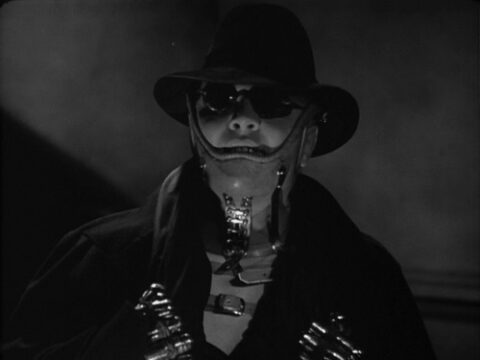
By contrast, I’m not sure that one can accept the absurdity of Gogol ringing up for Rollo’s body and being told he’ll have it delivered in thirty minutes with no questions, but never mind. After the train crash, Stephen’s hands have to be amputated but Yvonne begs him to do more, so he grafts Rollo’s hands on Stephen’s arms. Gogol probably thinks he has a right to have Yvonne after what he does for her husband, though giving Stephen the new hands does seem to be genuine kindness as well, and he probably wouldn’t have thought it mattered where the hands came from, nor that the operation would have particular side effects – I think. One isn’t always sure with Gogol. We see him operating on a young girl and not even asking for money after he succeeds, but then glancing at her mother’s ring in one of the few amusing bits of business Lorre gets to do. Much of the humour involves Gogol’s boozy housemaid Ned who is rarely seen without a parrot on her shoulder, gets tired of being “lady’s maid to a waxwork“, and indulges in relatively amusing banter with Reagan, a character who proves to be rather unscrupulous in his methods and more interesting than the usual wise cracking irritation, concerning whether a body has its head or not. She even gets to say a variation on the famous Mummy line “it went for a little walk”. Nome of this undermines the essential seriousness of the story as the Orlacs are forced to sell many of their possessions to pay for the surgery and Stephen finds that his new hands aren’t much use in playing the piano but do have a tendency to throw pens and even knives in moments in anger. Gogol begins to get properly insane after Yvonne rejects him in an extremely direct way; she slaps his face and tells him how repulsive he is. But could Stephen be losing it too? Perhaps he’s even responsible for a murder?
Even with both Gogol and Stephen seemingly going mad and more and more action set inside the ‘living’ [rather than the ‘medical’] part of Gogol’s house which is full of odd design work in the time honoured German expressionist tradition [in fact Mad Love was the last horror film to even partly embrace the style for some time], the film does throw us what seems to be an outrageous twist that I’m surprised the filmmakers got away with. It’s the scene that so affected me as a kid. Stephen receives a note that promises that he will learn the truth about his hands if he goes to a specific address that night. There, a caped man with a hissing voice speaks to him, claiming that he’s Rollo. After a while we see that he has metal hands, and soon after that a grotesque, almost kinky brace where his head has been reattached to his body! Now of course we know that a 1935 film would never have a character be like this for real, it would never have passed the censors, but it’s possible that the makers were trying to make the audience believe this at the time – and I sure did back in the late ’70s. The way things wrap up has some predictability, but there are some neat twists on conventions, such as when the driver of the car supposedly coming to the rescue is instructed to slow down because the urgency of the situation isn’t obvious. And there’s some delicious melding of irony with terrific tension when Yvonne is mistaken for her own wax dummy. The dummy is quite obviously played also by Frances Drake, but this sort of adds to the strange feel [she’d seem almost real to Gogol anyway] and I didn’t notice any Mystery Of The Wax Museum-style breathing and winking. Yvonne’s strong character is quite different from the norm at the time in that she drives much of the plot, even she still ends up fainting near the end, and Clive, who had to spend two hours ever morning in the makeup chair while his hands were “covered with something green, something blue, then something white”, does perform a few of his scenes well, even though generally he still seems to think that he’s in a silent picture.
Of course it’s really Lorre’s show. That distinctive voice has never been so creepy and Lorre’s total conviction makes lines like “I have conquered science, why can’t I conquer love” and some rather forced classical references seem natural things that this person would say, while his bulging eyes seem to have been made to look even larger than normal. What’s so frightening about him is that he knows perfectly well that he’s going mad and absolutely loves it! However, the reduction of Stephen’s role does mean that we aren’t really given quite enough time to fully immerse ourselves in the horrifying tragedy of a man whose hands could be taking on a mind of their own. This doesn’t harm things too much though. The use of music is odd too; composer Dmitri Tiomkin, in a very early job for him, only spots a tiny number of scenes which stick out for this very reason. But the camera of Toland and Lyons is a bit more mobile than was normal for the time, even if Freund perhaps overuses inward zooms, and when Gogol truly starts to lose it Freund visualises this with distorted POV and mirror reflections of different Gogols. In fact elsewhere he also sometimes visualises a character’s state of mind or fear, like when multiple hands give receipts to Yvonne. Toland is already experimenting with deep focus, though I don’t really buy Pauline Kael’s claim in her famous thesis ‘Raising Kane’ that Orson Welles cribbed much of what he did in Citizen Kane from this film, because it was in an article which was an unabashed agenda-filled attack on Welles with no real evidence to prove her theories. But Mad Love has a beguiling sort of craziness and deserves to be a bit better known than it is.
Rating: 











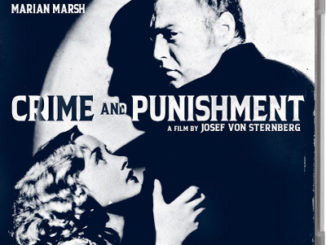
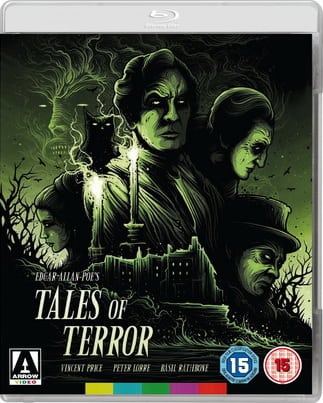
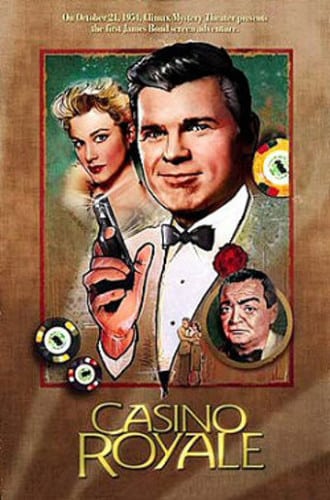
Be the first to comment